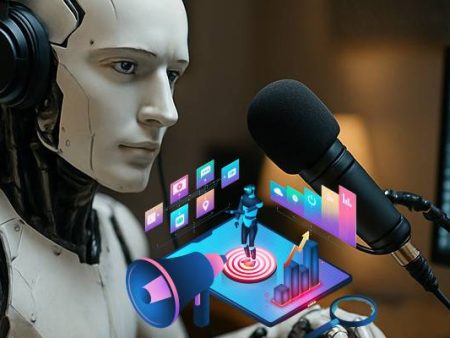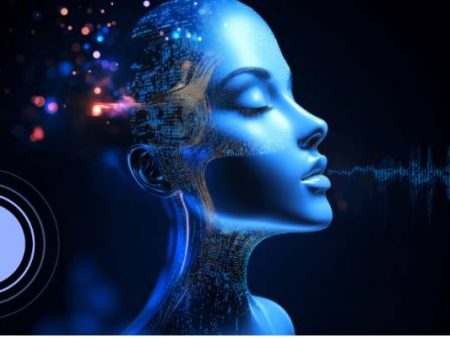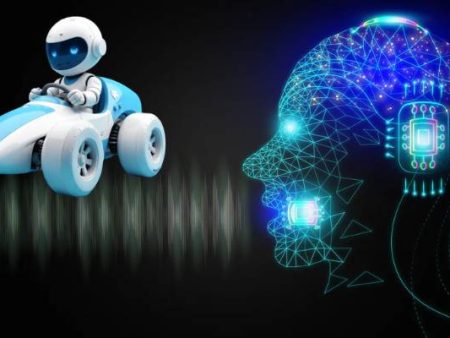Music has always been about pushing boundaries. From the first time someone strummed a handmade string on an ancient instrument to the wild experiments of electronic sound in the 20th century, artists have leaned into whatever tools were available to explore, disrupt, and reimagine what music could be.
Today, we’re standing at another one of those crossroads. Artificial intelligence, particularly AI voice generation, is shaking up the music world.
It’s not just about convenience or novelty—it’s becoming part of the creative DNA for musicians experimenting with new textures, tones, and entirely fresh identities.
But here’s the kicker: this isn’t a simple love story between musicians and machines. It’s a mix of excitement, tension, ethical debate, and artistic discovery. Is this tech liberating creativity, or is it quietly changing what it even means to be a musician?
The Allure of AI Voices in Music
Why would a musician even want to use AI voice technology? On the surface, the answer seems obvious: new possibilities.
- Imagine a songwriter who can’t hit high notes generating a demo in the soaring vocals of an AI-generated counterpart.
- Picture an indie artist producing harmonies in multiple speech cultural accents synthetic, creating an immersive cross-border soundscape.
- Consider bands adding layers of choirs, robotic tones, or subtle whispers without hiring dozens of singers.
These tools production don’t replace musicianship—they expand the palette.
It’s like giving a painter new colors that were never available before. Except here, the “colors” are synthetic voices with customizable pitch, accent, emotional tone, and even gender fluidity.
Accessibility: A Quiet Revolution
Something that often gets overlooked in the hype is accessibility. For the visually impaired, AI voice tools aren’t just experimental toys—they can be lifelines.
Musicians with limited vision can use AI-generated voices to navigate software interfaces, compose lyrics with auditory prompts, or test how vocal layers sound without relying on traditional methods.
According to the World Health Organization, over 285 million people live with visual impairment globally. Opening new pathways for creative expression through AI voices ensures music remains inclusive.
The Race Between Voice Battle
Make no mistake—there’s a race between voice battle happening in the music industry. Companies like OpenAI’s Jukebox, Sony CSL’s Flow Machines, and Google’s MusicLM are vying to become the go-to for synthetic voice and sound generation.
This competition isn’t just about who has the slickest demo—it’s about ownership of the next creative frontier. For musicians, the result is both thrilling and unsettling.
They now have access to tools that can clone a voice, simulate entire choirs, or reproduce styles that blur the line between homage and plagiarism.
The tension lies in whether this “voice arms race” will empower more artists or lock them into ecosystems controlled by tech giants.
Case Studies: Musicians at the Edge
The Indie Innovators
Independent artists have been among the first to dive headfirst into AI voice exploration. With limited budgets, these creators can’t afford studio time with multiple vocalists or expensive producers. AI fills that gap.
Artists on platforms like SoundCloud and Bandcamp are already experimenting with AI harmonies, robotic duets, and culturally diverse accents. This democratization is giving underdog musicians tools that once only big studios could access.
Mainstream Examples
On the mainstream side, we’ve already seen AI voice experiments turn into viral sensations. In 2023, an AI-generated track mimicking Drake and The Weeknd called Heart on My Sleeve exploded across platforms, leading to heated debates about artistry and rights.
While that song raised legal red flags, it also highlighted just how powerful AI voice tools are in shaping listener expectations. People weren’t just curious—they genuinely enjoyed the sound.
Cultural Fusion Through AI
One of the most fascinating developments is how AI voice tools enable cultural blending.
Instead of focusing only on English-language vocals, artists can generate speech cultural accents synthetic, weaving together multiple languages and identities into a single track.
Imagine a ballad sung half in Tagalog, half in French, with the same AI voice morphing seamlessly between accents.
It’s a cultural experiment, but also an act of connection. Music has always bridged divides, and AI may accelerate that by erasing the barriers of language and geography.
Of course, this comes with questions: is it cultural celebration or appropriation? If a musician uses AI to replicate an accent without genuine ties to that community, does it honor diversity or exploit it?
The Tools Behind the Magic
Let’s talk tech. How do these systems actually work?
Most AI voice generators rely on deep learning models trained on vast datasets of recorded voices. Through neural networks, they capture phonetics, intonation, timbre, and emotional cues. Then, using text-to-speech (TTS) engines, they render any input into synthetic but realistic audio.
Some advanced platforms even allow “style transfer,” where the emotion of one performance can be applied to another. That’s how a flat vocal can be made to sound passionate, melancholic, or aggressive with just a few adjustments.
Examples include:
- Descript’s Overdub: lets artists create custom synthetic versions of their own voices.
- iZotope VocalSynth: a plugin offering futuristic textures.
- Resemble AI: capable of creating voices indistinguishable from human singers.
This isn’t just novelty. These tools are reshaping workflows, reducing costs, and sparking creativity in ways traditional methods can’t.
The Double-Edged Sword of Experimentation
Here’s the part that’s hard to ignore: while experimentation is exciting, it also opens a Pandora’s box.
- Ethics: Should musicians clone a famous singer’s voice without permission, even as an experiment?
- Ownership: If AI generates a voice based on thousands of unknown singers in its training set, who really owns the output?
- Authenticity: Do fans want to hear synthetic vocals, or are they being tricked into believing something is “real”?
This is where artistry collides with technology’s gray areas. Some musicians argue that all art is built on remixing and inspiration. Others worry that synthetic cloning undermines the soul of music.
Industry Reactions
Music labels and streaming services are already scrambling to adapt.
- Universal Music Group has lobbied to ban unauthorized AI tracks from streaming platforms, fearing loss of control over intellectual property.
- At the same time, services like Endel are partnering with artists to create AI-assisted ambient albums, proving the industry isn’t dismissing the tech—it’s trying to harness it.
The contradiction is striking: AI is seen as both a threat to artistry and a golden ticket to endless content.
My Take: The Emotional Core of Music
As someone who cares deeply about music, I’ll admit—I’m torn. On one hand, I’m inspired by the boldness of musicians embracing these new frontiers. I’ve listened to AI-generated voices that felt hauntingly beautiful, like discovering a new instrument that didn’t exist before.
On the other hand, I worry about the creeping loss of intimacy. Part of what makes music powerful is knowing it comes from lived experience. Hearing a synthetic voice replicate heartbreak or joy can be moving, but is it the same as hearing the crack in a real singer’s throat?
Maybe the answer isn’t about replacing one with the other but weaving them together. AI voices could become collaborators rather than competitors, tools rather than threats.
Conclusion: The Sound of Tomorrow
So, how are musicians using AI voice tools to experiment with new sounds? They’re using them to democratize production, expand creative palettes, explore cultural blending, and even break accessibility barriers. They’re also walking a tightrope of ethical dilemmas and industry politics.
The future of music isn’t going to be about choosing between human and machine—it’ll be about the dialogue between them. This ongoing conversation will define whether AI voices become another passing gimmick or a permanent part of music’s evolution.
For now, one thing is clear: the sound of tomorrow won’t be created by humans alone. It will be born from collaboration between flesh, imagination, and algorithms.
And maybe, just maybe, that’s what music has always been about—taking what we have, experimenting without fear, and finding beauty in the unknown.


